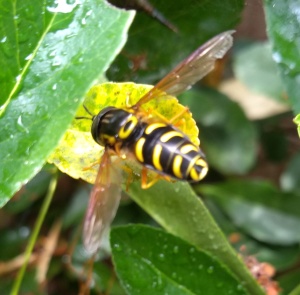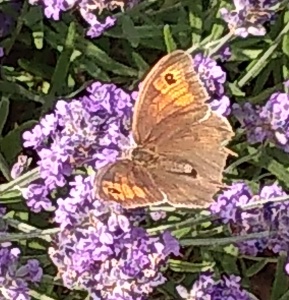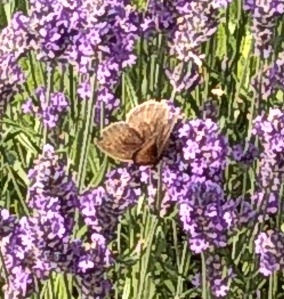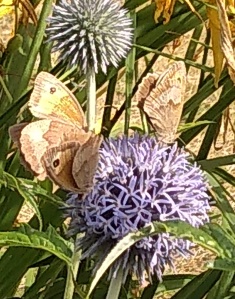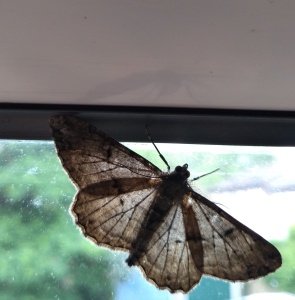Leaf collection was the main job last week, especially on Wednesday through to Friday. It gets the heart pumping and is physically tiring so I definitely felt like I’d had a workout. There are still more leaves to fall so the process will be repeated for a few more weeks yet. At least it will be great for composts or as leaf mould, as well as my health.
One of my favourite trees is still holding onto its autumn colour.
The Maidenhair tree (Ginkgo biloba) pictured below in its glorious yellow hue.


The common name, Maidenhair tree, comes from the fan shaped leaves resembling the Maidenhair fern foliage. This national tree of China is also referred to as a living fossil. Fossils dating back to the Jurassic period have been found. It is the only remaining tree classified under the Ginkgophyta division (neither broadleaf nor conifer). This unique and beautiful tree is simply amazing.
Other plants giving interest at this time of year include
Clematis cirrhosis car purpurescens ‘Freckles’. The delicate drooping flowers appear between November and February. It is a lovely Clematis to grow over a walkway where the flowers can be appreciated from the side as well as underneath (where the freckle pattern hides).

As it flowers early in the year it is categorised as a pruning group 1 Clematis so doesn’t require regular pruning. However if you need to reduce its size then it can be pruned immediately after flowering finishes but when the risk of frosts have passed.
Viburnum tinus is also blooming now. The fragrant flowers will be around until April and followed by blueish black berries that are great for birds. This large shrub is evergreen too so it brings a welcome flourish of colour during the winter months.

Thankfully I managed to relax at the weekend after an exhausting week. I completed my handmade Christmas presents and cards, so I am ready for the festive season. As I sat crafting on the sofa I had a great view of my neighbouring Rowan (Sorbus) tree. The Starlings (Sturnus vulgaris) are getting through the berries quickly; I am not sure there will be any left for the Redwings (Turdus iliacus) when they finally arrive. I do like the iridescent nature of Starling plumage and their ability to mimic sounds so I quite like seeing them. I was excited to see another bird visit the Rowan; my first ever sighting of a Bullfinch (Pyrrhula pyrrhula). Due to the distance my attempt to photograph it isn’t brilliant but you can just about make out its colourful breast in the photo below.

The pinkish breast colouring means it was female (the males have red breasts). She was snacking on the Rowan berries but they also eat seeds, fruit tree buds and find insects for their young.
Other berries eaten by birds are those on the Pyracantha. This week I noticed that lots of Pyracantha plants were overladen with them. Its common name Firethorn is very appropriate and is given because of the heated, itchy reaction when the thorns pierce the skin. I can testify to this every time I have to cut it back.

I am still seeing fungus appearing in gardens too.
*Once again, please do not use this post as a guide to edible mushrooms.*
My latest find was the Pear-shaped or Stump puffball (Lycoperdon pyriforme).

This fungus grows on decaying wood and I found it in a stump.


